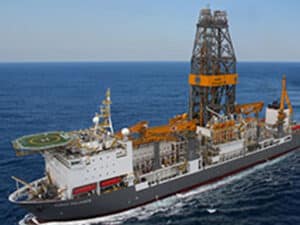
Rethinking the Platform Supply Vessel
Written by Marine Log Staff AUGUST 27, 2012—Robert “Bob” Hill has made a name for himself thinking out of the box. Hill, shown at left, is the principal of Ocean Tug & Barge Corp., which has a made name for itself as a leading designers of the Articulated Tug Barge—AT/B—with more than 32 years experience. Now Ocean Tug & Barge, working with Ship Architects, Inc., is looking to apply the AT/B concept to a whole different market and breed of vessel—the Platform Supply Vessel.
AUGUST 27, 2012—Robert “Bob” Hill has made a name for himself thinking out of the box. Hill, shown at left, is the principal of Ocean Tug & Barge Corp., which has a made name for itself as a leading designers of the Articulated Tug Barge—AT/B—with more than 32 years experience. Now Ocean Tug & Barge, working with Ship Architects, Inc., is looking to apply the AT/B concept to a whole different market and breed of vessel—the Platform Supply Vessel.
Since it first released the Provider Class AT/B supply vessel in 2004, Ocean Tug & Barge Corp. has been working with Ship Architects Inc. on refining the design to bring the same cost savings that the AT/B concept has brought to other sectors of the transportation business.
The AT/B concept is finding applications beyond the coastal tug and barge market. For example, Signal International, for example, recently signed a contract with Great Lakes Dredge & Dock Corporation for the construction of a 15,000-cubic-yard-capacity trailing suction hopper barge and 14,000-horsepower tug. Together, the two units will function as an articulated tug and barge trailing suction hopper dredge that will be the largest hopper dredge in the United States.
Signal International is performing the detail design and will construct the AT/B dredge in Orange, TX, based on a patent pending engineered design and performance specification from Great Lakes Dredge & Dock.

ADVANTAGES OF THE PROVIDER CLASS
According to Ocean Tug & Barge, the tug in Provider Class will be available in sizes from 1,800 to 12,000 hp and higher and the barge sizes from 1,000 to 15,000 dwt.
Additionally, as compared with a conventional PSV, the Provider Class AT/B has several advantages, including:
•Increased deadweight capacity per unit length
•Increased deck area, with virtually unobstructed views
•Reduced building cost per DWT
•Reduced crew size and manning
•Provides more flexibility when it comes to selecting a shipbuilder
•Lighter drafts
•High residual value
•Multiple specialty barges can be built without building new engine rooms
•Diesel-electric/hybrid-capable drive
•Speeds 12 knots and upward possible
•Simpler dry docking and repair/replacement of damaged unit
•Seaworthiness to 8M significant height seas
•Fully functional ocean tugs that are tow-capable
•Barges adaptable to many services outside the offshore industry
•Lower regulatory burden
•Fully DP-2 capable
•Increased maneuverability, especially in heavy weather
For example, comparing a 250 ft Provider Class barge, and a 250 ft PSV, of the same beam and draft, the difference in carrying capacity can be as much as 40%. This means one vessel can easily service multiple rigs, or carry more at a time to one rig.
Virtually the entire length of the barge is open deck. The tug master always operates from his normal conning position and with Z-drives, and DP capability, the unit can operate with the same capability as a self-propelled PSV.
Since the tugs and barges are built in specialized yards and are designed as true tug/barge units, the cost to construct per DWT capacity will be lower than for the single large PSV, and the same cost as a smaller one. It is even possible, with OT&BE’s long design experience and capabilities, to refit existing tugs and barges to this service.
Based on the US Domestic Tonnage, the crew will be smaller than that required for the self-propelled boat. However, the tug is capable of carrying a larger crew if desired by the owner. Also, the barge is considered unmanned and has a loadline based on this, with a 25% freeboard reduction allowed, and no crew.
The barges of the Provider Class will draw from 9 feet for inshore operation to 12-14 feet for deepwater operation.
As for the propulsion system, the Provider Class boats will have an EcoMarine Diesel-electric/hybrid drive system available as standard, but can be fitted with any type of drive available. The system will be easy to maintain, more flexible than traditional marine electric drives and more emissions/fuel efficient, especially in the hybrid versions. Some versions of the designs also allow for a greatly improved, conventional Z-drive arrangement using a unique engine arrangement developed by OT&BE.

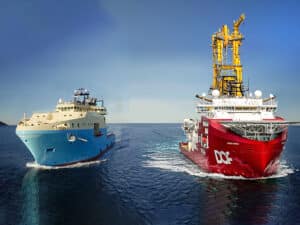
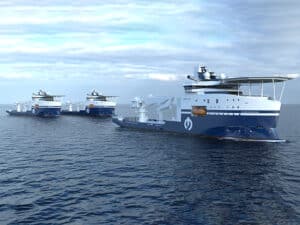
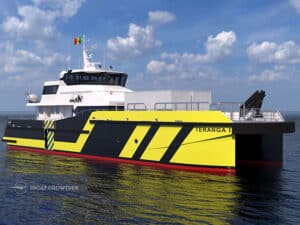
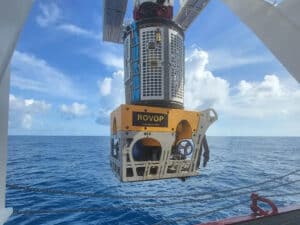
Leave a Reply
You must be logged in to post a comment.